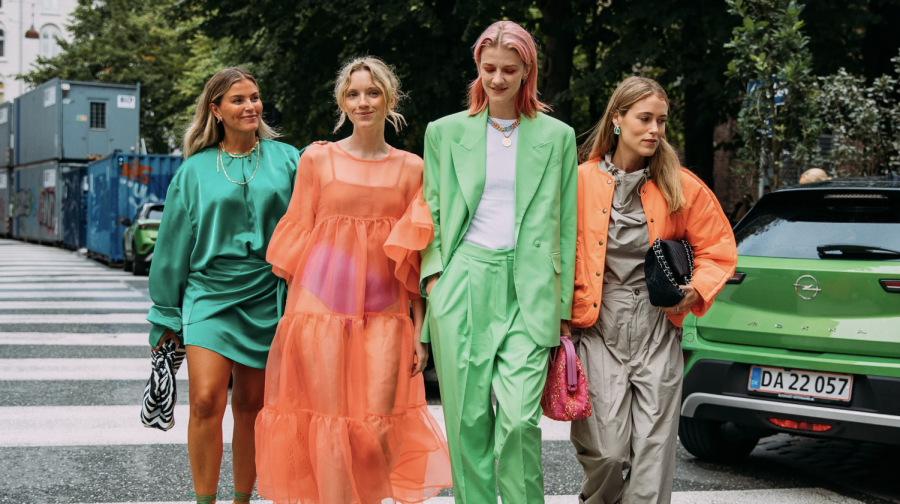Villa-Vogue: Dopamine Dressing
Dopamine dressing has been a major trend at fashion shows, like 2021 Copenhagen Fashion Week.
January 27, 2022
A new chapter emerges with the new year, a seemingly more normal one than the pandemic-riddled chapters of late. With 2022 comes opportunity and hope for better days to come. And what does society do with this newfound hope you may ask? Incorporate it into fashion, of course. Introducing dopamine dressing—a reflection of hope through clothing with the usage of bright colors and joyful ensembles.
The concept of dopamine dressing has been under the psychological research scope for quite some time. Do the colors we wear actually have an impact on our moods? Is this something that we should consider every morning when getting dressed? To further our understanding, it is important to take a closer look at the neurotransmitter known as dopamine.
“[Dopamine] has many functions: it is involved in reward, motivation, memory, and attention,” explained Maria Costantino, a lecturer in cultural and historical studies at the London College of Fashion. “When dopamine is released in large amounts, it creates feelings of pleasure and reward which motivates us to repeat a specific behaviour.”
The release of dopamine is what humans strive for. The single reason why our brains feel pleasure and set goals to reach is all thanks to that one hormone.
Now where does fashion fall into this?
It has been scientifically researched that when participants wear clothes of personal symbolic value, their perceived confidence increases. In addition to implemented value, the colors one chooses associate with one’s emotions. For example, cool hues are used to increase concentration, while warm colors enhance excitement and positivity.
It is important to note that meaning behind colors cannot be generalized to one answer. What one color may make someone feel could be different to the next. From a cultural perspective, the color white is primarily associated with purity in the West and associated with death in Eastern cultures.
That being said, the emotions one wants to portray through clothing should be for their own benefit. Don’t focus on how others will perceive you and focus on expressing one’s own self.
A better way to think about dopamine dressing is in relation to personal, rather than universal, associations. For some, wearing darker hues may arouse more feelings of happiness over bright colored counterparts. It all comes down to the individual’s personal associations with the shades they wear.
Now that we’ve established that dopamine dressing is subjective, I believe I should make it clear that I cannot tell people what colors to wear in order to feel a particular way. That’s impossible to define. However, bright colors have historically been a common link with sensory pleasure and are therefore expected to make a revival post-lockdown period. The proverbial rainbow after the storm, so to speak.
As society slowly moves towards a hopeful, post-lockdown period, figure out what colors people associate with confidence and wear them proudly.


